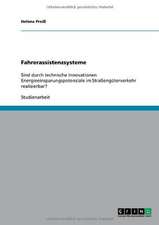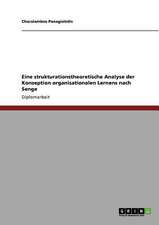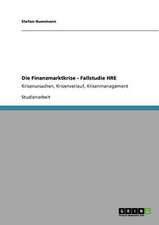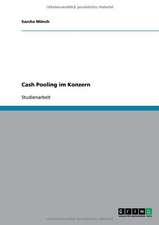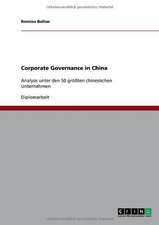Money, Politics and Power: Banking and Public Finance in Wartime England, 1694–96: Financial History
Autor Richard A. Kleeren Limba Engleză Hardback – 15 mai 2017
Histories of this period usually divide these events into two main topics, treated in isolation from one another: the recoinage debate and ensuing monetary crisis and a ‘battle of the banks’. The first is often interpreted as the pyrrhic victory of a creditor-dominated parliament over the nation’s debtors, one that led very predictably to the ensuing monetary crisis. The second has been construed as a contest between whig-merchant and tory-gentry visions of the proper place of banking in England’s future. This book binds the two strands into a single narrative, resulting in a very different interpretation of both. Parliamentary debate over the recoinage was superficial and misleading; beneath the surface, it was just another front for the battle of the banks. And the latter had little to do with competing philosophies of economic development; it was rather a pragmatic struggle for profit and power, involving interlocking contests between two groups of financiers and two sets of politicians within the royal administration. The monetary crisis of summer 1696 was not the result of poor planning by the Treasury; rather it was a continuation of the battle of the banks, fought on new ground but with the same ultimate intent – to establish dominance in the lucrative business of private lending to the crown.
| Toate formatele și edițiile | Preț | Express |
|---|---|---|
| Paperback (1) | 386.61 lei 6-8 săpt. | |
| Taylor & Francis – 12 dec 2019 | 386.61 lei 6-8 săpt. | |
| Hardback (1) | 765.43 lei 6-8 săpt. | |
| Taylor & Francis – 15 mai 2017 | 765.43 lei 6-8 săpt. |
Din seria Financial History
-
 Preț: 312.13 lei
Preț: 312.13 lei -
 Preț: 489.26 lei
Preț: 489.26 lei -
 Preț: 449.41 lei
Preț: 449.41 lei - 26%
 Preț: 846.09 lei
Preț: 846.09 lei -
 Preț: 449.41 lei
Preț: 449.41 lei -
 Preț: 489.26 lei
Preț: 489.26 lei -
 Preț: 445.89 lei
Preț: 445.89 lei -
 Preț: 449.41 lei
Preț: 449.41 lei -
 Preț: 489.26 lei
Preț: 489.26 lei - 25%
 Preț: 768.30 lei
Preț: 768.30 lei -
 Preț: 449.41 lei
Preț: 449.41 lei -
 Preț: 449.41 lei
Preț: 449.41 lei -
 Preț: 329.88 lei
Preț: 329.88 lei -
 Preț: 449.41 lei
Preț: 449.41 lei -
 Preț: 329.88 lei
Preț: 329.88 lei -
 Preț: 449.41 lei
Preț: 449.41 lei - 18%
 Preț: 1107.61 lei
Preț: 1107.61 lei -
 Preț: 449.41 lei
Preț: 449.41 lei -
 Preț: 449.41 lei
Preț: 449.41 lei -
 Preț: 449.41 lei
Preț: 449.41 lei -
 Preț: 449.41 lei
Preț: 449.41 lei -
 Preț: 449.41 lei
Preț: 449.41 lei -
 Preț: 323.23 lei
Preț: 323.23 lei -
 Preț: 449.41 lei
Preț: 449.41 lei - 18%
 Preț: 1107.16 lei
Preț: 1107.16 lei - 18%
 Preț: 1053.92 lei
Preț: 1053.92 lei -
 Preț: 449.41 lei
Preț: 449.41 lei -
 Preț: 449.41 lei
Preț: 449.41 lei
Preț: 765.43 lei
Preț vechi: 1028.13 lei
-26% Nou
Puncte Express: 1148
Preț estimativ în valută:
146.46€ • 153.33$ • 121.19£
146.46€ • 153.33$ • 121.19£
Carte tipărită la comandă
Livrare economică 05-19 aprilie
Preluare comenzi: 021 569.72.76
Specificații
ISBN-13: 9781138036666
ISBN-10: 1138036668
Pagini: 254
Ilustrații: 22 Line drawings, black and white; 1 Tables, black and white; 22 Illustrations, black and white
Dimensiuni: 156 x 234 x 20 mm
Greutate: 0.52 kg
Ediția:1
Editura: Taylor & Francis
Colecția Routledge
Seria Financial History
Locul publicării:Oxford, United Kingdom
ISBN-10: 1138036668
Pagini: 254
Ilustrații: 22 Line drawings, black and white; 1 Tables, black and white; 22 Illustrations, black and white
Dimensiuni: 156 x 234 x 20 mm
Greutate: 0.52 kg
Ediția:1
Editura: Taylor & Francis
Colecția Routledge
Seria Financial History
Locul publicării:Oxford, United Kingdom
Public țintă
Postgraduate and UndergraduateCuprins
1. Introduction
Part I: The institutional and economic context
2. England’s wartime system of public finance
3. The inception of the Bank of England
4. Parliamentary measures against clipping and bullion exports, 1689-95
5. The growing problem of war remittances
6. Land-bank projects, 1694-95
Part II: The political and policy narrative
7. The administrative debate on the state of the currency, September–November 1695
8. The act for remedying the ill state of the coin, November 1695–January 1696
9. Banking projects and public finance, early 1696
10. Guineas and the National Land Bank, February–April 1696
11. Connecting the dots: monetary policies as means to political ends
12. Monetary and financial crisis in England and the plight of the English army in Flanders, spring – summer 1696
13. Concluding remarks
Index
Part I: The institutional and economic context
2. England’s wartime system of public finance
3. The inception of the Bank of England
4. Parliamentary measures against clipping and bullion exports, 1689-95
5. The growing problem of war remittances
6. Land-bank projects, 1694-95
Part II: The political and policy narrative
7. The administrative debate on the state of the currency, September–November 1695
8. The act for remedying the ill state of the coin, November 1695–January 1696
9. Banking projects and public finance, early 1696
10. Guineas and the National Land Bank, February–April 1696
11. Connecting the dots: monetary policies as means to political ends
12. Monetary and financial crisis in England and the plight of the English army in Flanders, spring – summer 1696
13. Concluding remarks
Index
Descriere
This book examines one of the most famous economic-policy episodes in British history, offering an entirely novel and very sophisticated account. It explains key monetary and financial institutions in a highly accessible way, builds a novel interpretation of the creation and early years of the Bank of England from previously undiscovered archival data, shows who stood to benefit, and how, from the many innovations in money, banking and public finance being proposed by contemporary entrepreneurs and illustrates how knowing the financial constraints and objectives of government is essential for understanding the stakes and outcome of legislation pertaining to money and banking.













